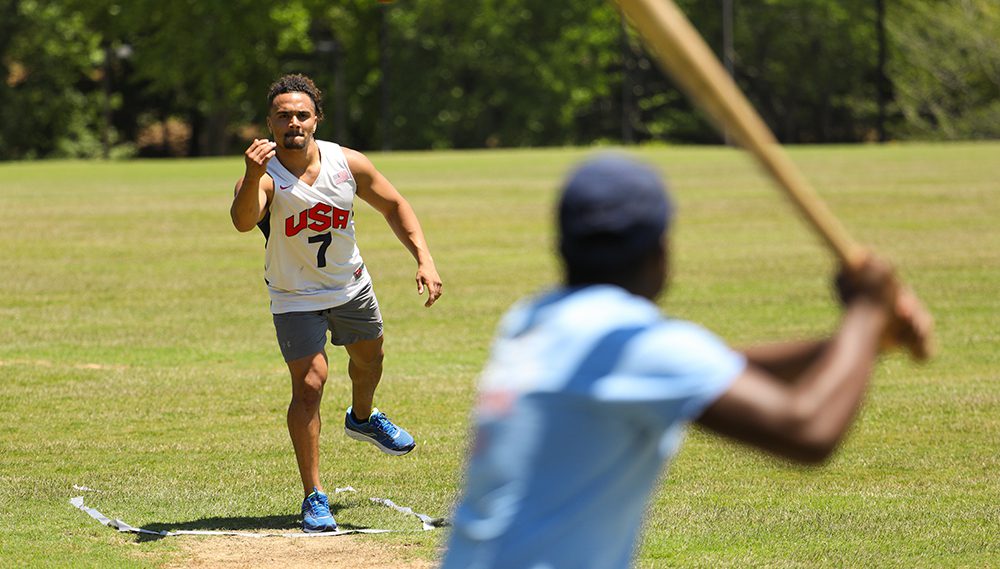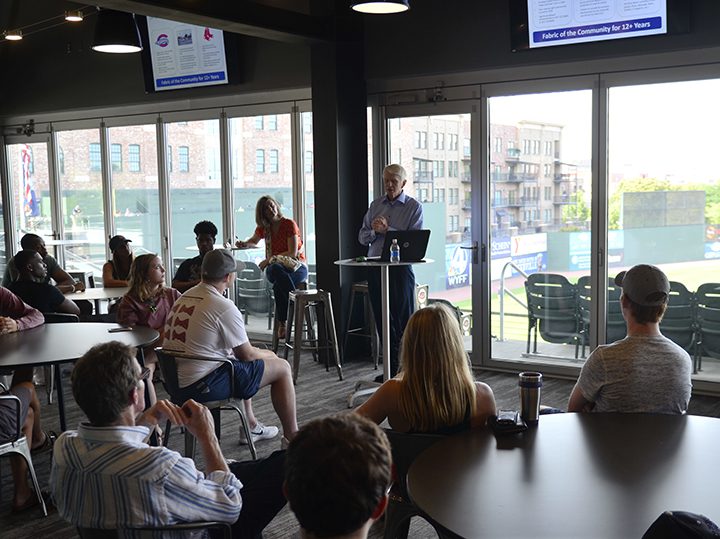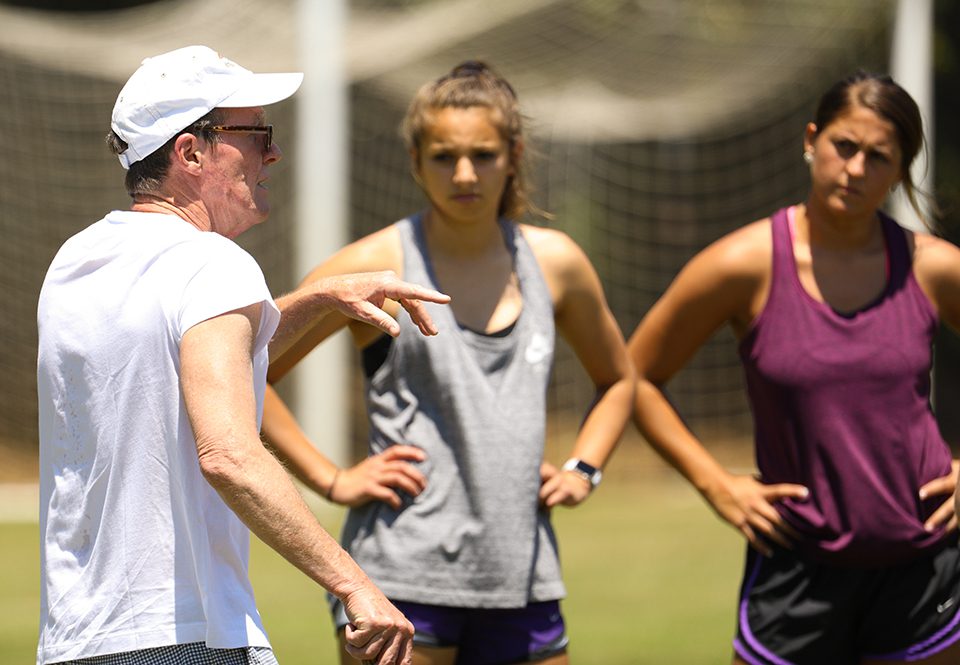May X takes the field

Baseball’s the all-American game. But it’s also an intricate microcosm of economics, history and geography—just the thing for summer study.
Two of Furman’s 2017 May X classes used baseball to explore broader academic themes: The Rise of Professional Baseball in the U.S.: Beginnings to 1922, which covered social, labor, media and sports history; and Geography and Sports, which used five sports, including baseball, to cover topics such as globalization, the diffusion of sports, the importance of place in sports and why people choose their favorite teams.
Both classes met at a Greenville Drive game the last week of May for a session with the Drive’s owner and president, Craig Brown, and to enjoy all that minor league ball offers on a late spring night.
“We’re in the business of making memories, and we’re in the business of making the Upstate a strong community,” Brown said.

Greenville Drive Owner and President Craig Brown speaks to Furman students at Fluor Field in Greenville’s West End.
Foul balls smacked against the outside of the building as he talked about the life of a minor league player.
“It puts a new definition on ‘you’d better really love the game,’” Brown said. “They work hard. It’s not very glamorous.”
The combination of the topic and enthusiastic teachers made for two great years of May X, said Will Gaddis ’18, a communication studies major. He took the history of baseball in 2016 and came back for the geography class this year. Furman’s May Experience—May X—offers compact, real-life learning in the first weeks after the regular academic year ends.
“You’re constantly engaged, you’re excited to come to class,” said Gaddis, who pitches for the Paladins.
And it’s not every day your professor tells you to watch more SportsCenter or pay closer attention to your Yahoo! Sports feed.
“Those kinds of things, start paying attention to, if you haven’t before,” said George Lipscomb, an education professor who teaches the sports geography course, on the first day of class.
Sports and May X are a good fit, Lipscomb said. The coursework is ideal for the cooperative, compressed setting. Besides baseball, his class looks at soccer, rugby, cricket and basketball.
The comparison helped students understand the small footprint baseball has left on a global scale, despite its enduring popularity here.
Jonathan Mouw ’19, another Furman baseball player and a business major, learned that British colonization planted the games that are more popular in most of the rest of the world.
“Trying to spread baseball to somewhere where England’s already touched, it’s going to take a backseat immediately,” Mouw said.
Steve Richardson has a bat leaning against one wall in his office in the James B. Duke Library. A creased poster of Mickey Mantle that hangs near the window dates to his childhood. Richardson works in outreach services in the library. He teaches the history of baseball because he loves it.

Instructor Steve Richardson points out field positions to students Molly Dwyer ’18 (L) and Taylor Vahle ’19 (R).
Richardson said baseball in the late 19th and early 20th centuries “marries American history and social behavior so well. They’re so closely woven that if you pull a string, both of them will come apart.”
The country was going through significant industrial changes, urban growth, burgeoning immigration, labor and management issues—and every one of those left its mark on the game.
“They’re a perfect match,” Richardson said. “I continually uncover more connections, regardless of how often I do this.”
Richardson grew up in a Simpsonville neighborhood where it seemed every older man had played for the mill baseball team at some point. His mom, a school teacher, used to require her students to watch the World Series.
“She thought it was important culturally and socially,” Richardson said.
As part of his course, students leave the library and head to the field where they measure out a diamond that matches the dimensions used in the late 19th and early 20th centuries. Then they play a game with equipment that’s historically accurate for that era.
Today’s professional games, especially outside of Major League ball, are community events as much as they are sporting competitions.
“There’s an educational component just going to a baseball game,” Lipscomb said. “So much is, in a way, not about the sport itself.”
Taylor Vahle ’19 was among the handful of women to take one of the baseball-related classes this year. When her professor and the Drive’s owner emphasized the broader experience of a game, she understood.
“No one’s really a die-hard minor league fan,” said Vahle, who plays softball for Furman. Instead, they come for promotions and relaxed time with friends.
Still, there’s an appreciation for what’s happening on the field even if it’s not a favorite MLB team out there.
“It’s the kind of thing that you really can’t explain, that initial hook,” Richardson said. “It’s got you or it doesn’t.”
Jordan Lyons ’20, a guard for Furman’s basketball team, took the geography class and recognized in a new way how sports can bring together communities and even countries.
“It makes me want to pay attention to it more on an international level,” he said.
Mouw said that’s exactly why more people should be taking these classes.
“I would recommend this class to anyone who rolls their eyes at the mention of sports,” he said.